Snake Plant Care & 5 Amazing Benefits of Sansevieria
Easy Snake Plant care tips such as sun light, soil, water, temperature, & propagation. How to grow beautiful healthy Sansevieria plants indoors & outdoors!
So many things to love about Sansevierias! With many common names such as Snake Plant, Bowstring Hemp Plant, Mother In Law Tongue, or Devil’s Tongue, they are all evergreen and beautiful with dramatic sword-like leaves.
Native to tropical and sub-tropical regions of Europe, Africa, and Asia, snake plants are super easy to grow, and some of the best plants to clean indoor air! Check out our guide on 12 best air purifying easy care indoor plants here if you are interested . 🙂
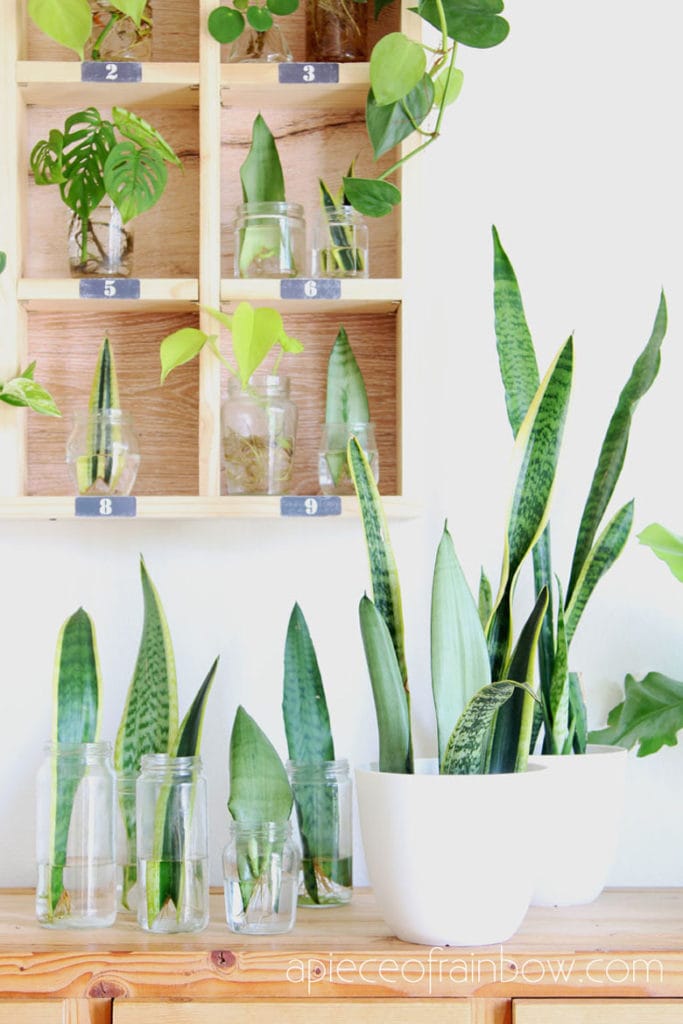
I also gathered some inspirations on how to use Sansevieria / Snake plants to decorate our homes. If you want even more Snake plants after seeing these beautiful photos, they are the easiest to propagate, see tutorial here!
Let’s look at some great benefits of Sansevieria, and Snake plant care tips such as light, soil, water, etc.
*Some resources in article are affiliate links. Full disclosure here.
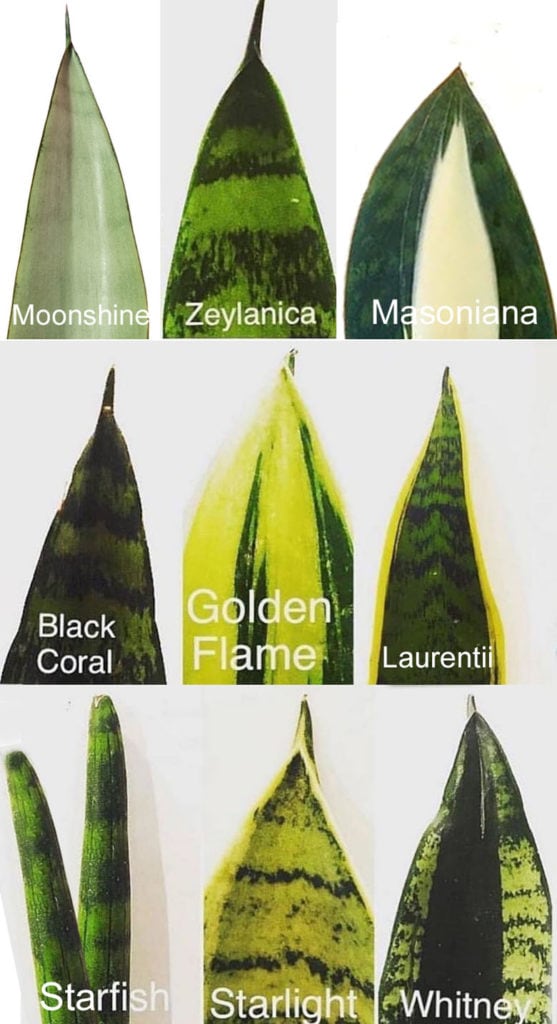
Many different species of beautiful Snake plant / Sansevieria varieties. ( Via ZZbotanical )
5 amazing benefits of Snake plants
- Snake plants are considered some of the best indoor plants to purify air, along with spider plants and peace lilies, are very effective at cleaning the air, removing toxins such as formaldehyde, according to NASA Clean Air Study.
- Easy care and low maintenance, Sansevieria plants tolerate low light, irregular watering, and all kinds of neglect.
- Snake plants are slow growing and compact, great for small spaces such as a bedroom, and container plantings on a porch or balcony.
- Attractive and unique, there are many species of snake plants, some have dark-green leaves, some have white vertical stripes, all will look beautiful in any interior styles such as modern, farmhouse, and bohemian.
- Easy to propagate, which means you can share them as gifts, or multiply them to decorate more spaces in your home.
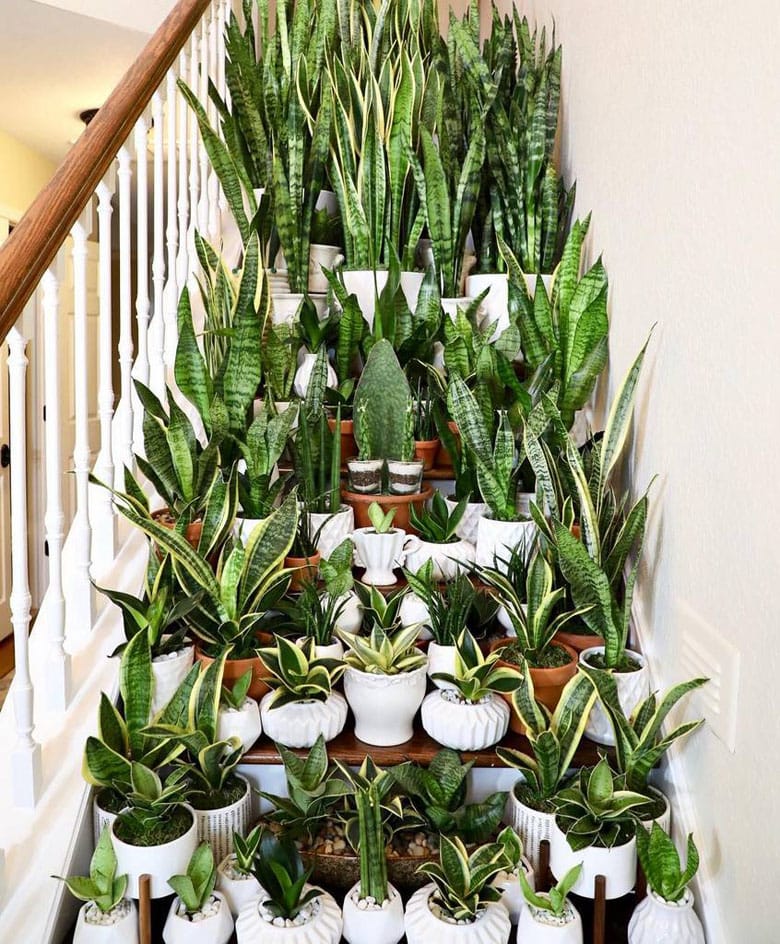
Imagine all the rooms you can decorate and gifts you can give with a big Sansevieria collection like this by plant_momma?
Snake Plant care tip 1: Does Sansevieria need direct sunlight? How much light do Snake plants need?
Although snake plants can tolerate full sun and low light, bright shade or a little morning / evening sun is best for a snake plant. Sansevieria can get sunburn in hot noon sun.
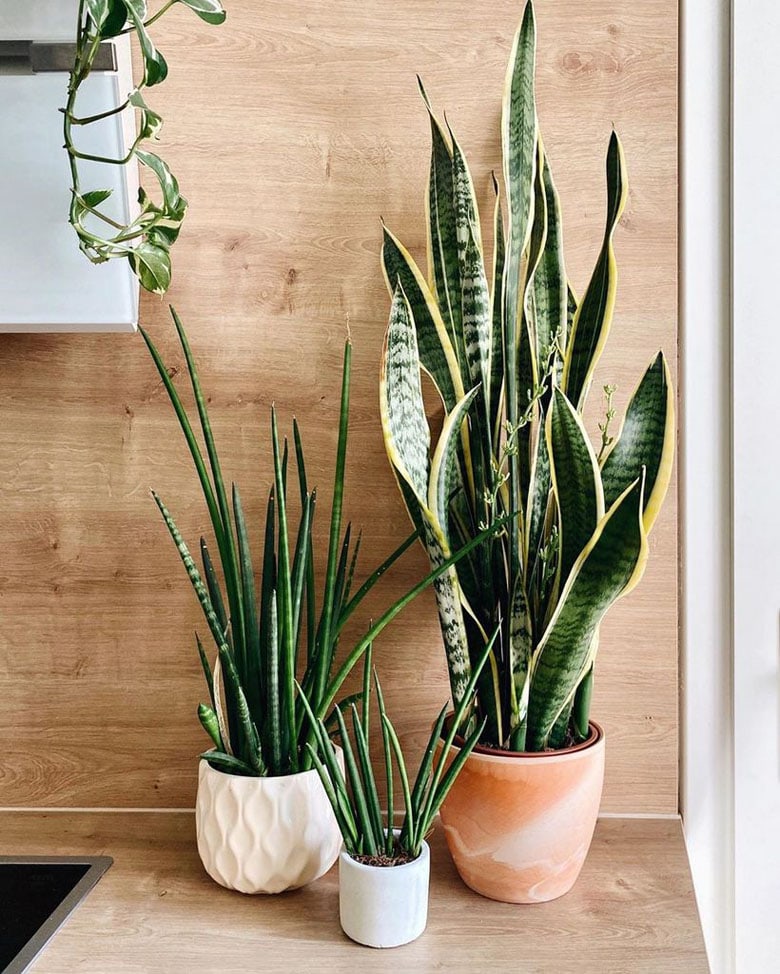
Beautiful Sansevieria cylindrica and Sansevieria trifasciata ‘Laurentii’ by intotheplants.
Snake Plant care tip 2: How often should I water Snake plant?
Indoor Snake plant only needs to be watered once every 2 to 4 weeks. During winter it needs only one watering every couple of months. Overwatering or using pots without drainage holes can kill your plants fast.
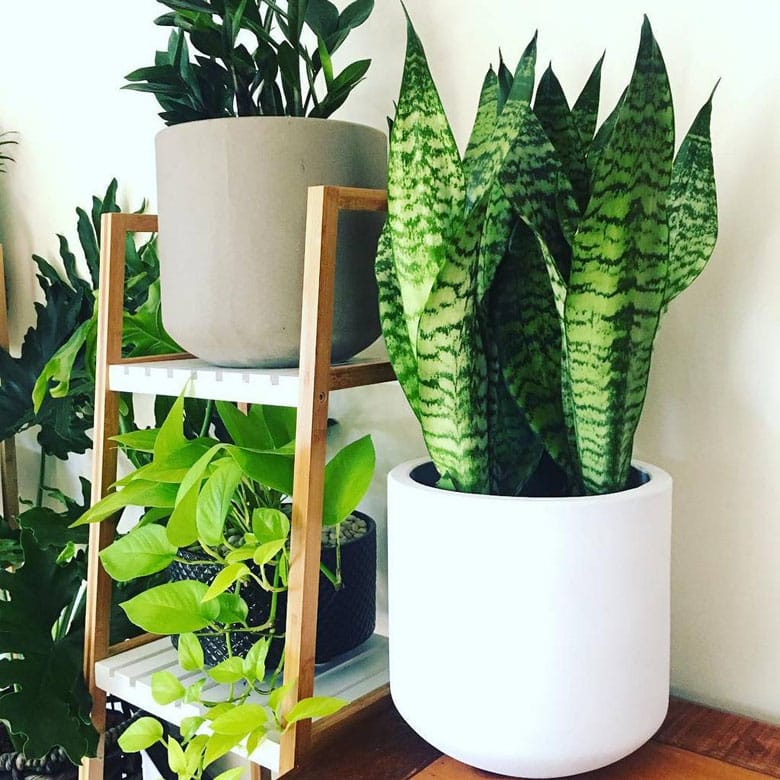
Sansevieria zeylanica in modern white pot by UrbanLeaf.
Check if the top 2″-3″ of soil is dry. If not, you can wait another week. Don’t over-water snake plants, or let the plant sit in water for over a day, as the plant can easily root rot. Check out more about the best ways to water indoor plants here.
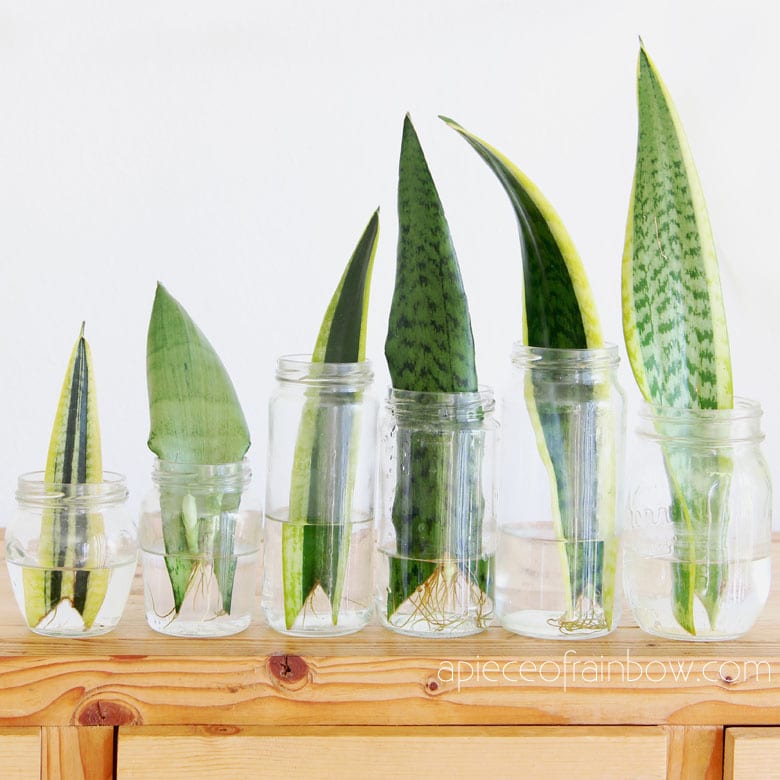
Paradoxically, Sansevieria / snake plant can grow in water, like many of my favorite indoor plants! The reason is that soggy soil contains harmful bacteria that can cause root rot, while clean water with occasional liquid fertilizer is a good growing medium for many plants.
You can check out this tutorial on the best plants to grow in water.

Snake Plant care tip 3: Best Temperature to grow Snake plant
Sansevieria will suffer damage and rot in very cold Winter temperatures. If the soil is dry it may survive temperatures as low as 5°C / 41°F. The best temperature to grow snake plant is between 18°C – 27°C / 65°F – 80°F
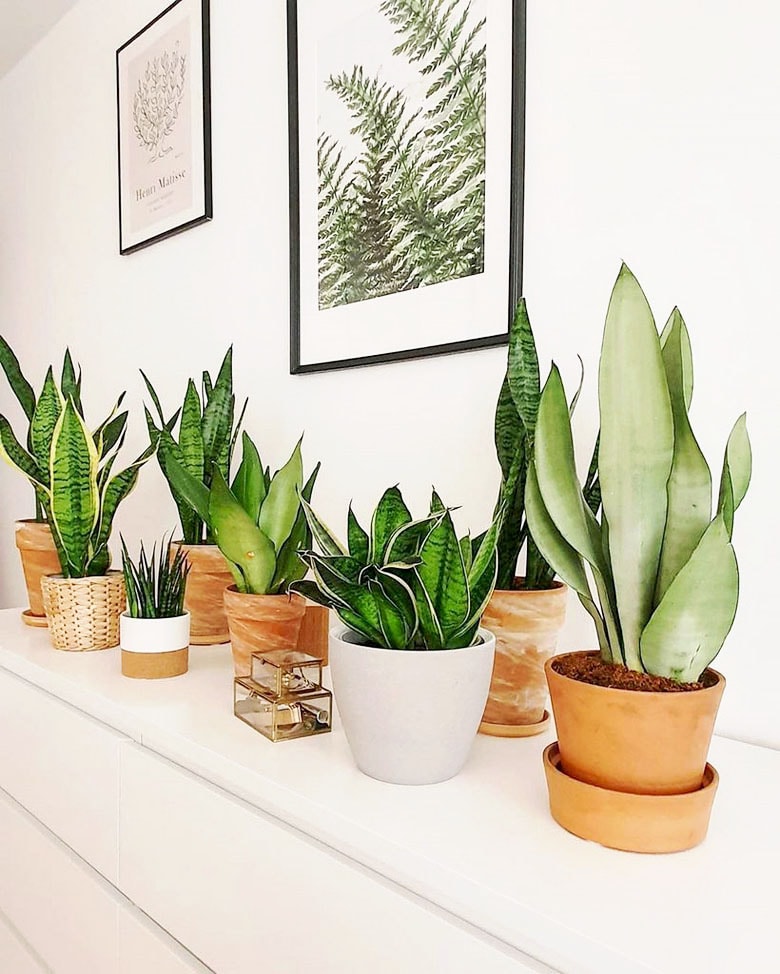
Sansevieria trifasciata ‘Moonshine’, Sansevieria zeylanica, Sansevieria cylindrica and Sansevieria trifasciata ‘Laurentii’ by Wrosliny.
Snake Plant care tip 4: Soil and Fertilizer
Similar to succulents, Snake plant/ Sansevieria prefers soil or potting mix that is well draining. Most potting soil will work well. They don’t need much fertilizer, but will grow a little more if it is fertilized a couple of times during the spring and summer. You can use any houseplant fertilizer that is good for foliage plants.
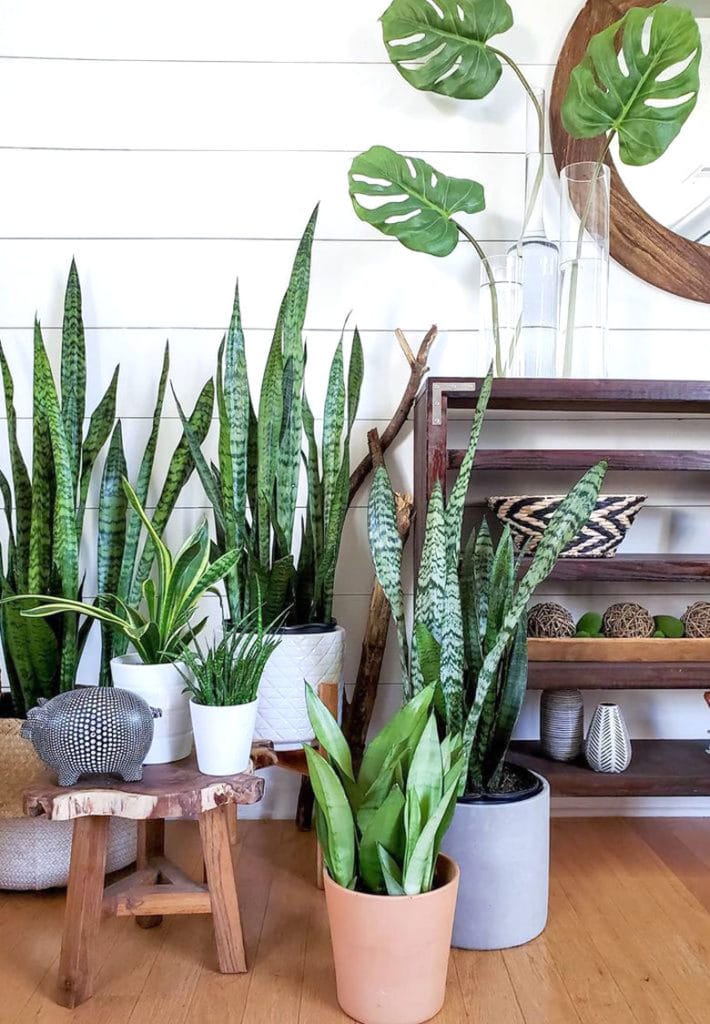
Sansevieria ‘Moonshine’, zeylanica, cylindrica and ‘Laurentii’ in modern farmhouse boho room by Flora and furnish.
Do I need to repot snake plant?
Snake plants don’t mind being pot bound. Because they are slow growing, they only need repotting once every 3 to 5 years.
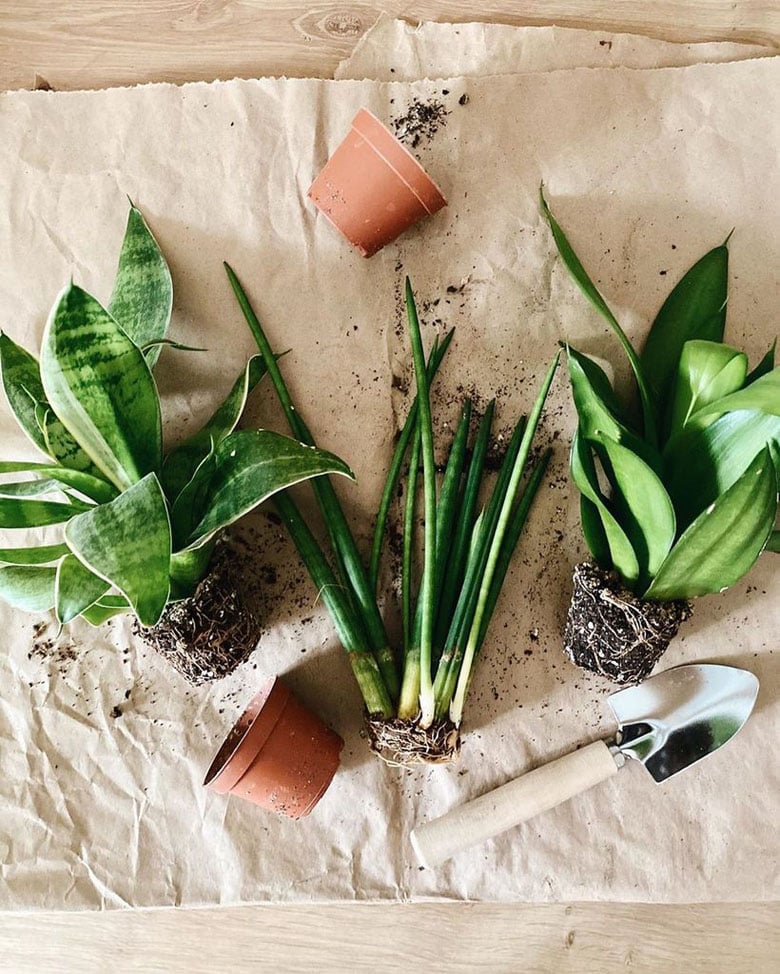
Beautiful species of snake plant: Sansevieria ‘Jade’, cylindrica, and futura by intotheplants.
You can also divide bigger a snake plant to create more plants, see propagation tips below!
Pests
Healthy Snake plants rarely attract pests. When Snake plants are stressed, they can get mealybugs and spider mites. The best solution is to remove these pests with a damp cloth, and give the plants better growing conditions as listed above.
Sansevieria propagation
It is super easy to propagate snake plant in water or in soil! Here’s our detailed tutorial on 3 easy ways to propagate Sansevieria/ snake plants, and the pros and cons of each method.
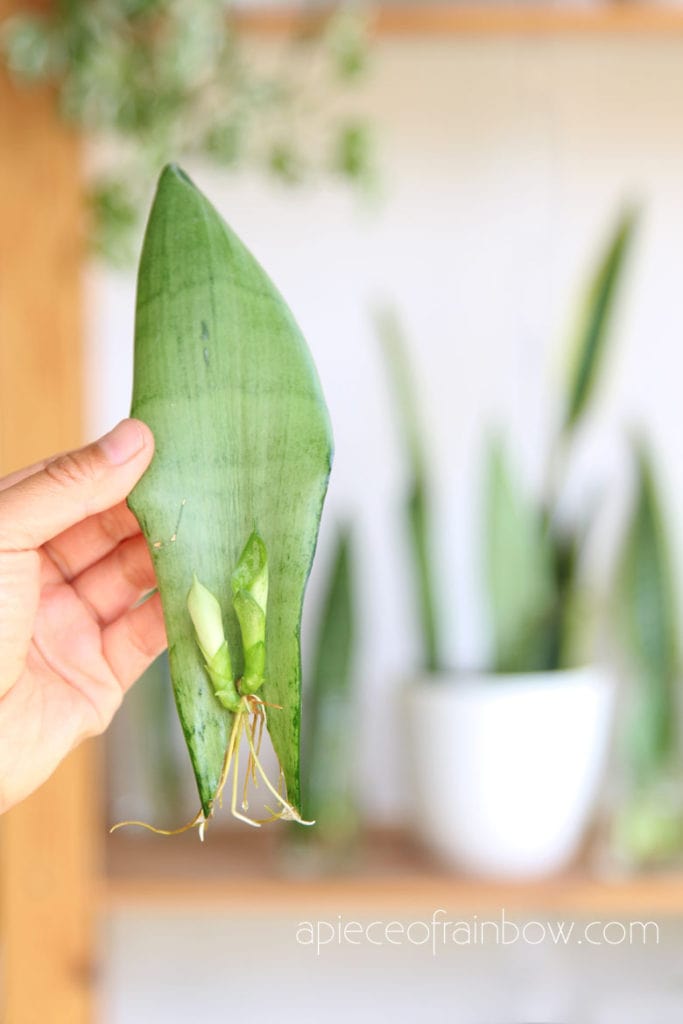
You can even save a dying snake plant by propagating leaf cuttings from it!
Why is my Snake Plant dying?
If your Snake Plant is not shriveled in dry soil, the reason is likely over-watering or cold temperature, which can cause the roots or leaves to rot.
Extremely low light would also affect plant health. Make sure the plant gets some natural light. You can always rotate a few plants if you need one for that room without windows.
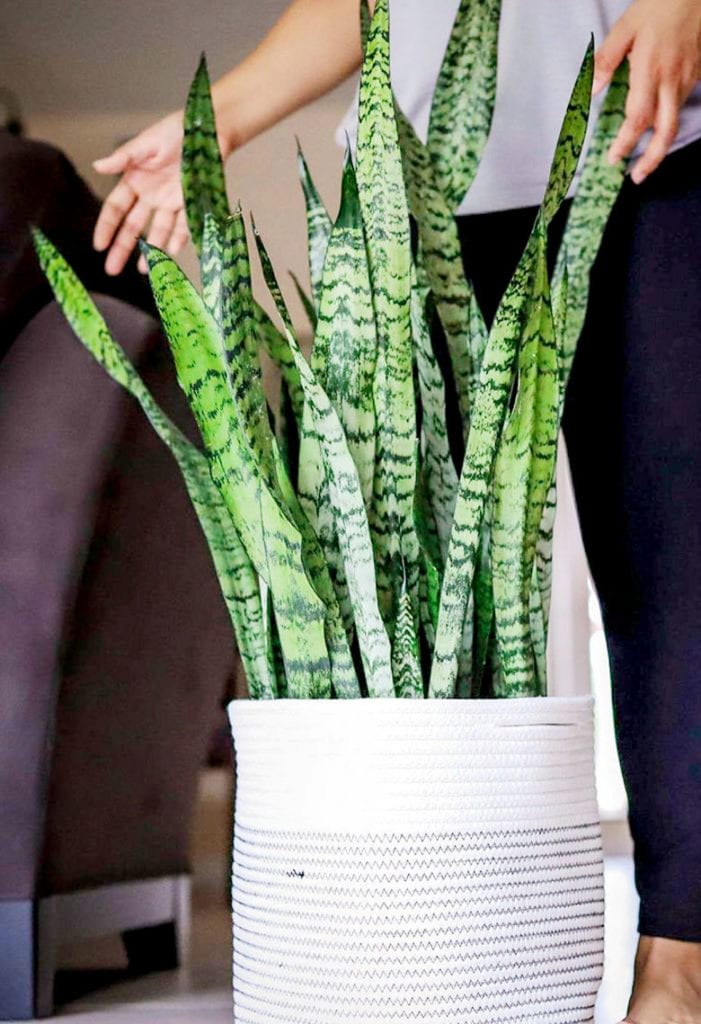
Healthy Sansevieria trifasciata ‘Black Coral’ by planted not buried.
There are over 70 beautiful Sansevieria varieties, many of them have variegated foliage with yellow or white stripes and interesting patterns, like shown in this chart below by Charming Plants.
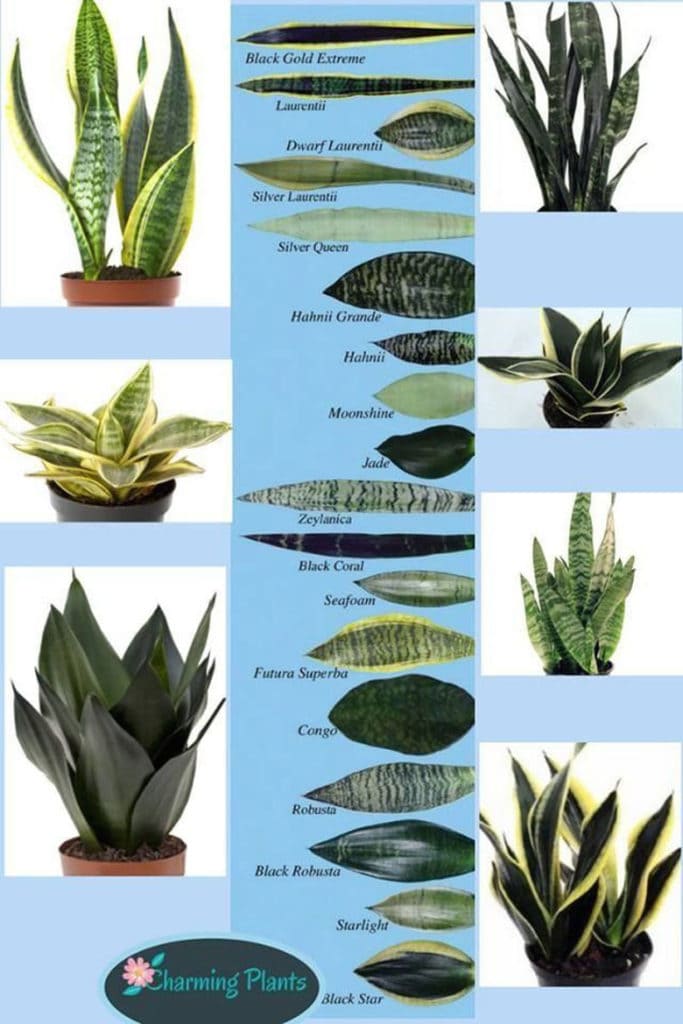
Popular cultivars include Sansevieria ‘Moonshine’, ‘Compacta’, ‘Goldiana’, ‘Hahnii’, ‘Laurentii’, ‘Silbersee’, and ‘Silver Hahnii’.
Is Snake Plant safe for pets?
Snake plant contain saponins, which can cause gastrointestinal upset in pets such as nausea, vomiting and diarrhea if consumed, says the ASPCA.
Still here? 🙂 Come visit our indoor garden with our favorite plants here!
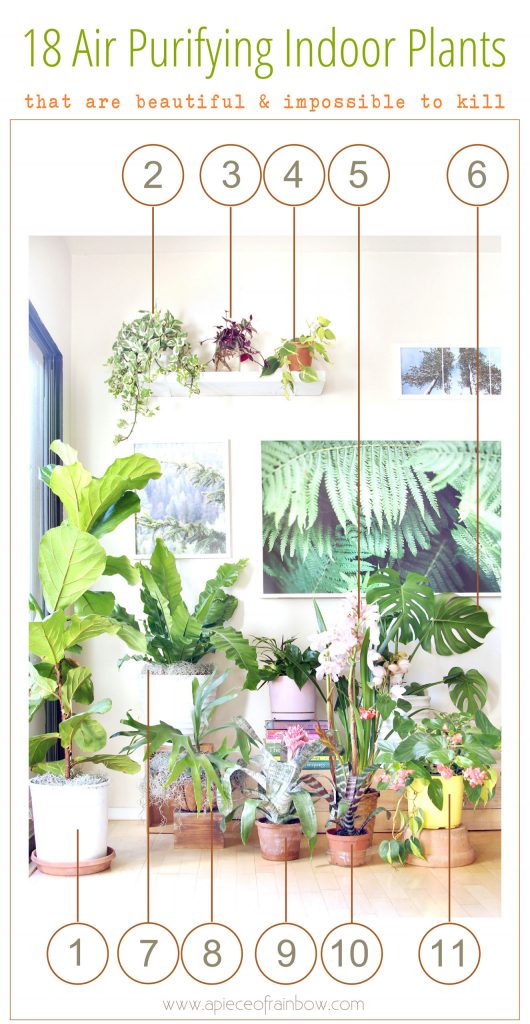

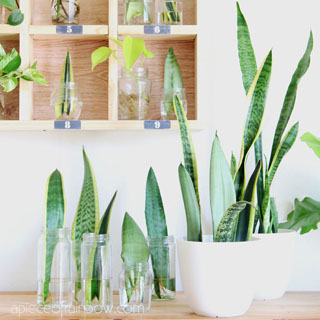
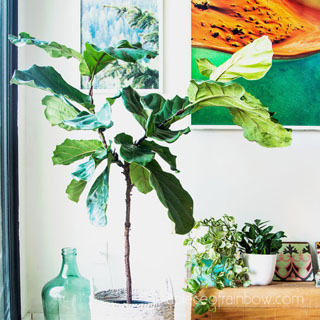
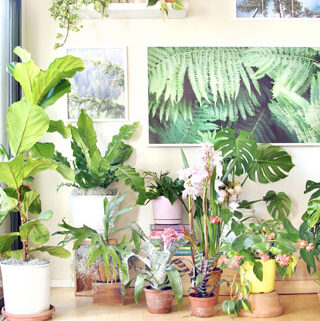
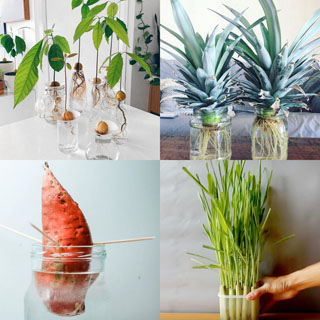
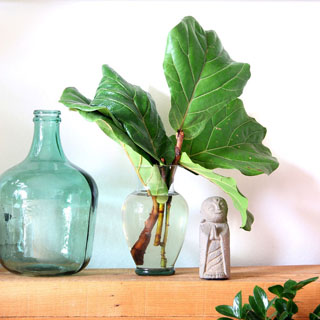
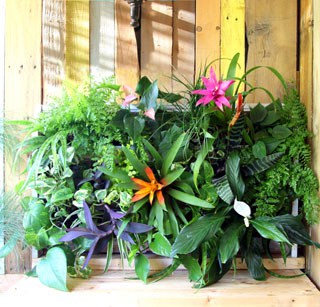
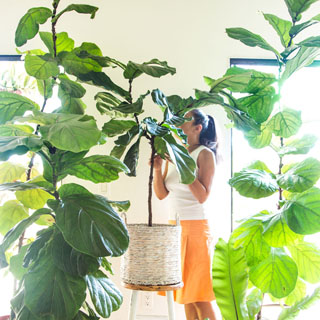
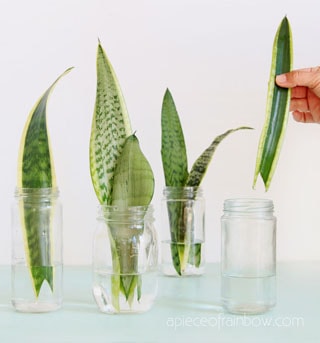


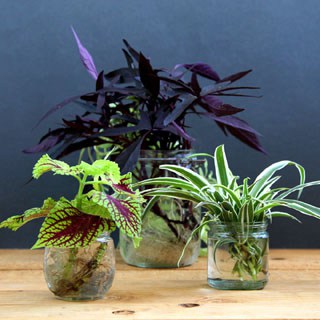
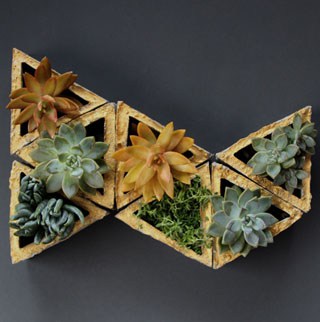


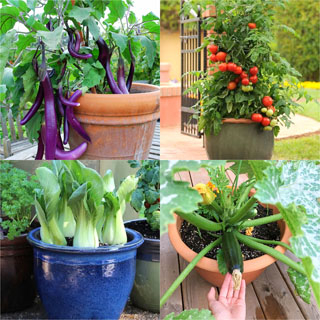
Snake plants are one of my faves! I don’t know that I realized how easy these are to propagate. Such a great houseplant.
I have used a moisture-meter religiously for many years now because I am a notorious over/under waterer! I find it to be more trustworthy than my fingers! They now have ones with a light meter and even a pH meter on them as well. And they are surprisingly cheap on Amazon. Definitely worth the investment! Hope this helps someone out there!
These plants are all just gorgeous. I have always had very good luck with them.At one time before we down sized our home I had 109 various plants. I love taking care of them and watching them grow. And giving clippings for friends and or potted ones as gifts.
109?! that sounds amazing Debra!! yes they are beautiful gifts to share! 🙂
Compre varias sensivieras para vender, según instrucciones plante. Al mes me di cuenta que tenían manchas negras y cafés, se están muriendo.. Me dijeron que eran hongos, compre plaguicida pero ha sido imposible combatirlos. Corte lo malo, puse en agua para propagar y se pudrieron. No se que hacer!. Me orientan plis?
hi Vilma! are you keeping the cuttings in warm temperature? also letting them dry for a few days before putting in water may help! 🙂
My Snake Plant has long stems, that look like they may bloom. I’ve never seen this stage, so could you enlighten
me
hi Tina! you are one of the lucky people that gets to see a snake plant bloom! they don’t flower often, and growing flower stalks won’t harm the plant! 🙂
Hello!!
Very helpful article . Mine sadly started having soggy leaves probably due to the cold, so in order to save it I would like to propagate it. If I use the method with water can I place it in soil after the roots appear??
Thank you verycmuch
hi! yes, and when you make the cuttings, cut off all the damaged part! 🙂
Thanks for sharing this lovely blog and help us infromation
Can I propagate a “starfish” sansevieria in water? I have accidentally broken a leaf off from the middle.
Hi, Ananda; I remembered this article and came back for it when it was time to repot my snake plants! Thank you for this very helpful post!
I used to drive into work everyday, and I drove by this dry cleaners’ where they displayed all these perfect snake plants, all precisely the same height and same type… I always thought they must be interesting folks to spend so much time on their plants, they did a lovely job. Hope mine will continue to flourish! Thanks again!
Hi, my concern is bugs. My mom always had indoor plants and I just remember nat’s or little flies always around them.
hi Sylvia, one of the ways to control the little flies is to keep the soil surface dry with a layer of pebble or gravel, so they can lay eggs. 🙂
Hi Ananda,
There is some excellent advice here on how to care for Snake Plant.
Question: do you use a moisture meter to see when it’s time to water, or do you prefer to just run your hands through the soil to check if it’s dry?
hi! we just feel the soil by weight or touch. 🙂
Do you need to change the water when you are propagating a Sansevieria?
And If I want to grow it in water how often do I need to change it?
hi, i would only change water if it looks a bit cloudy. once roots start growing, the water stays quite clear 🙂
Como fica bonito este tipo de planta!